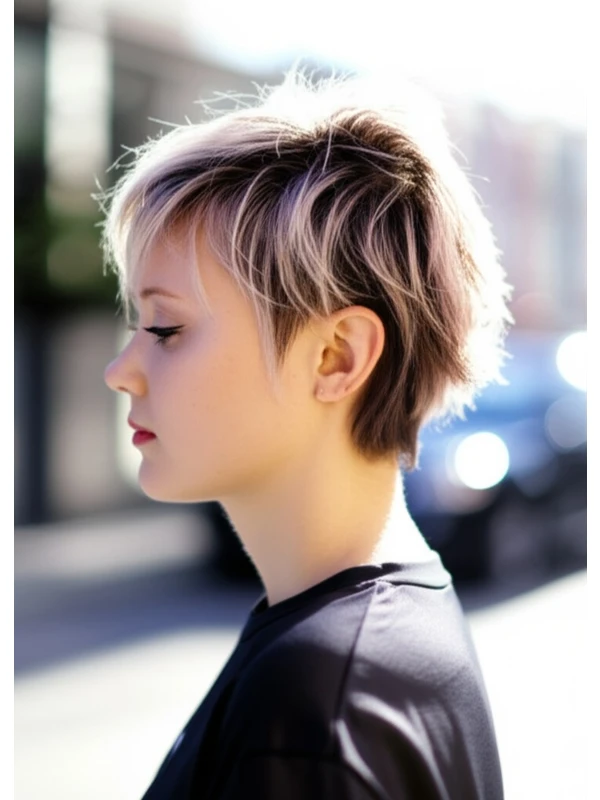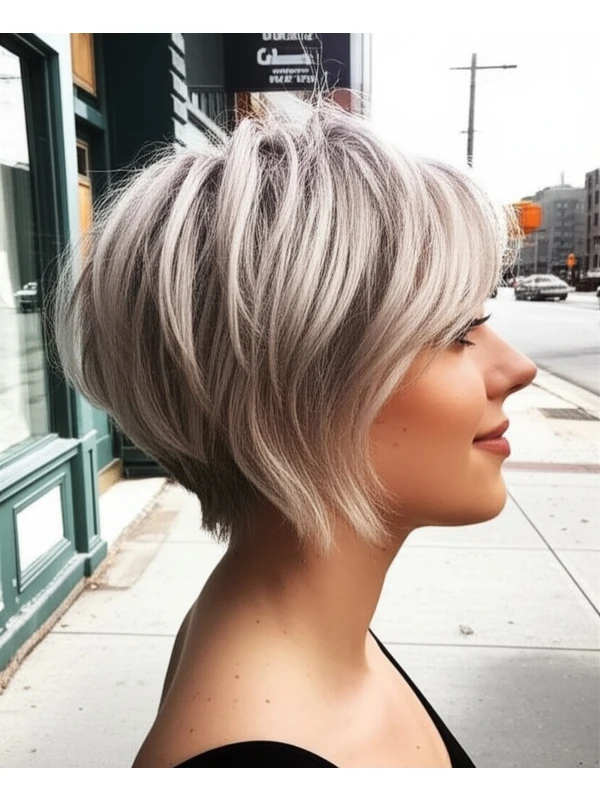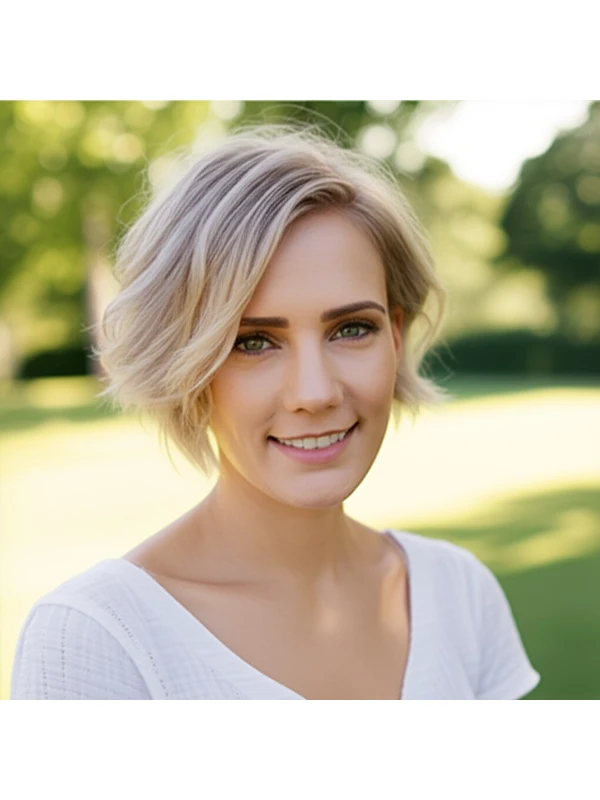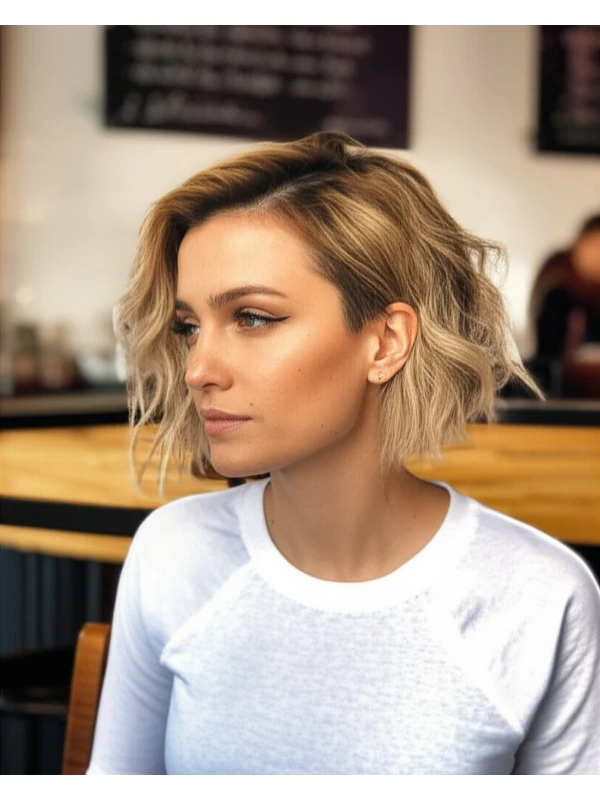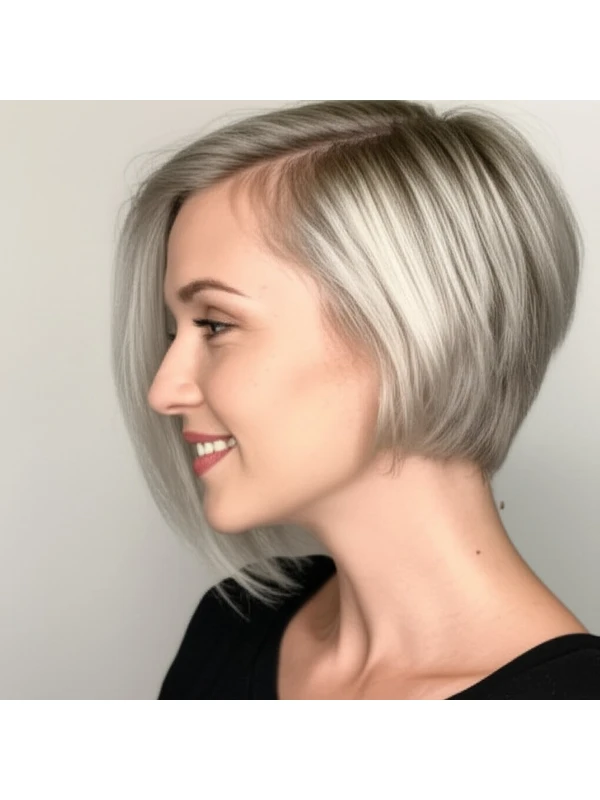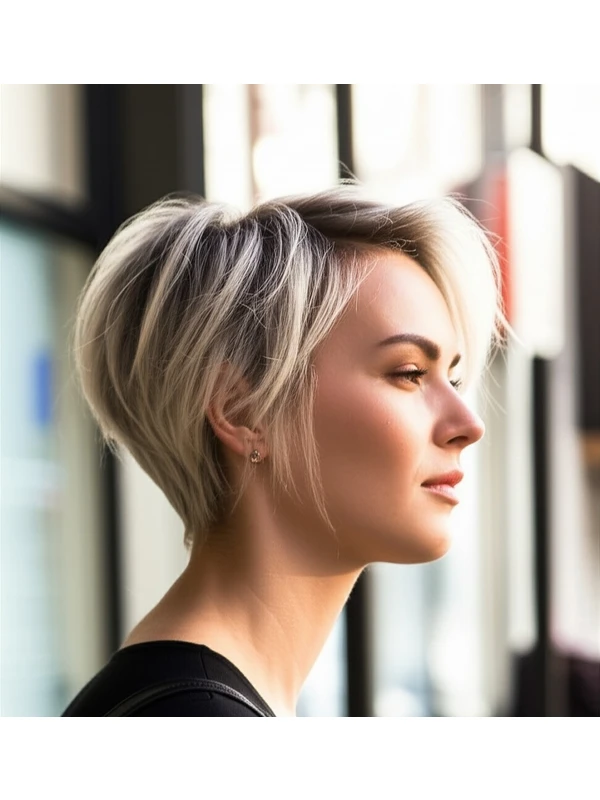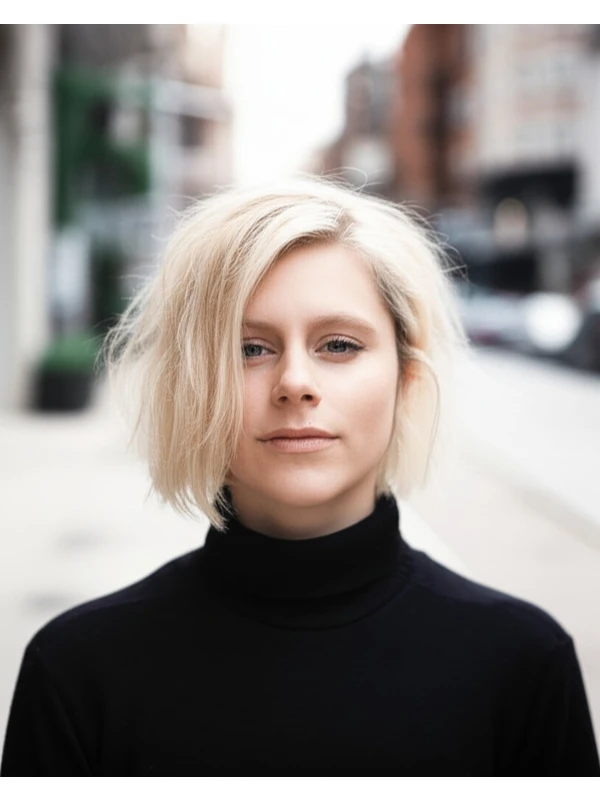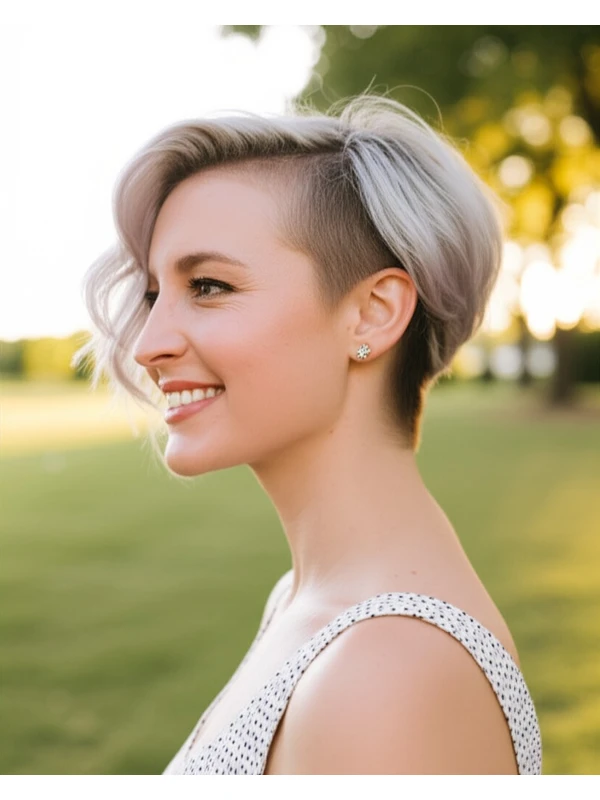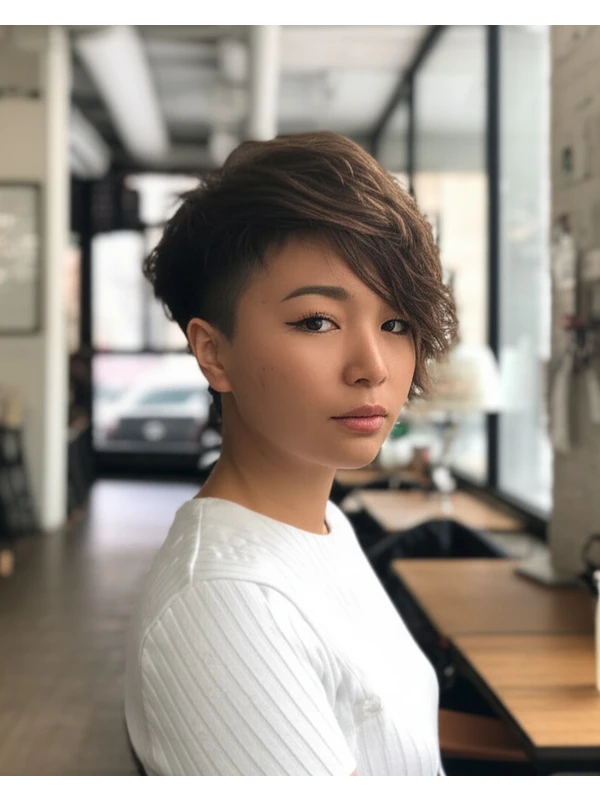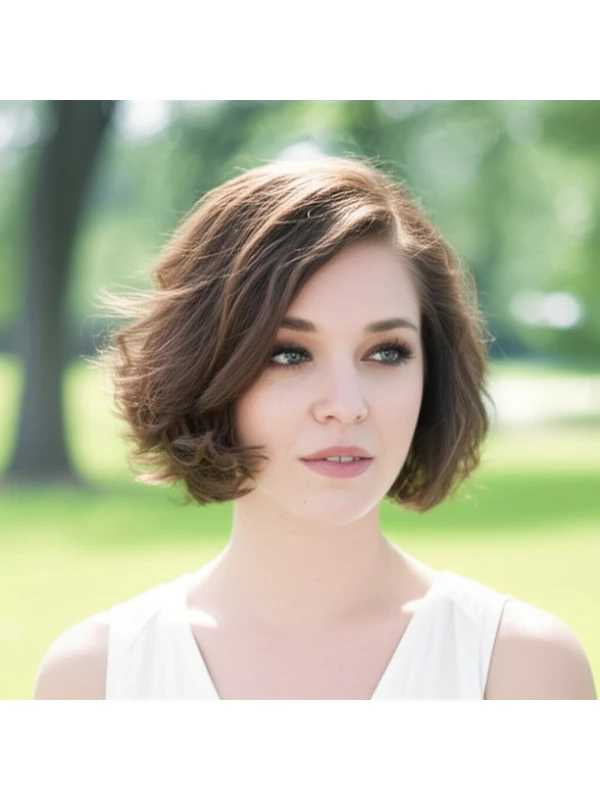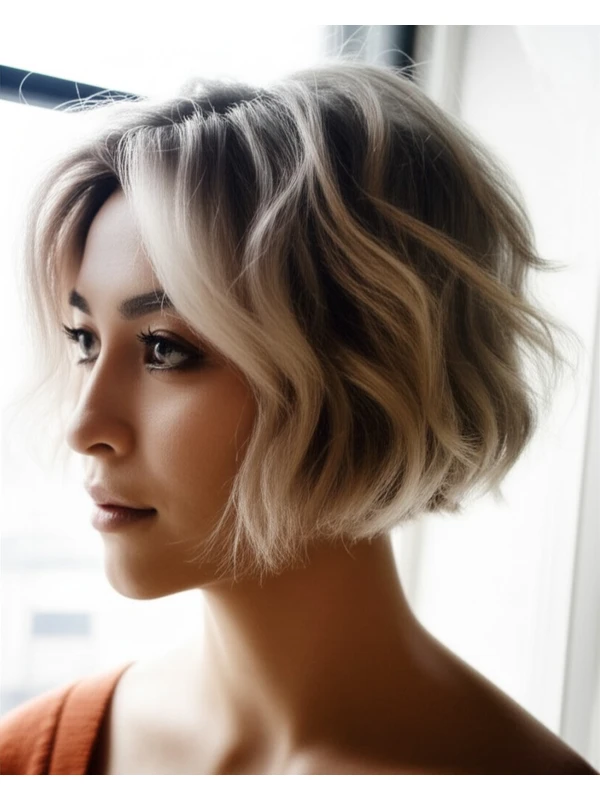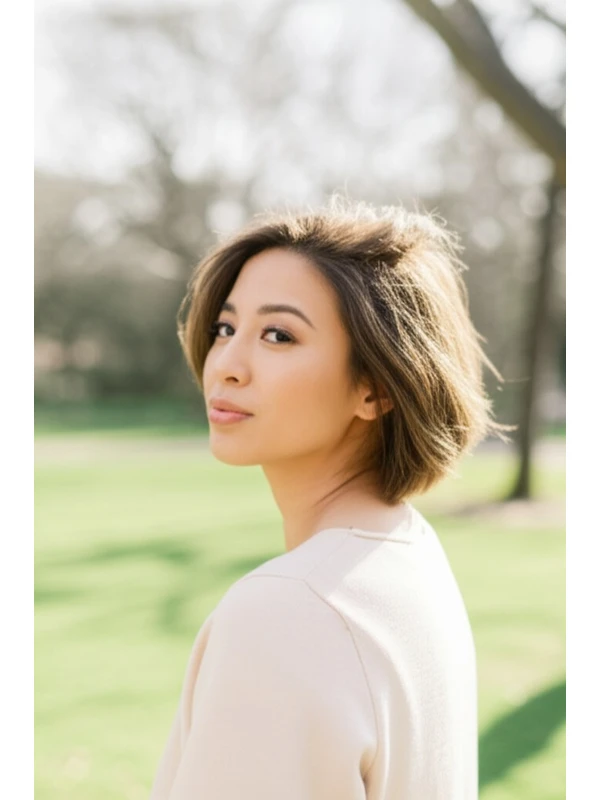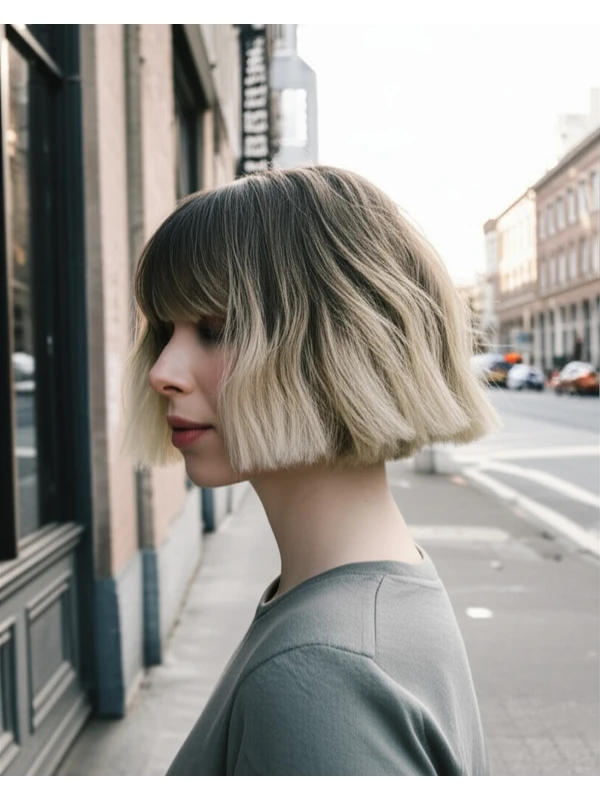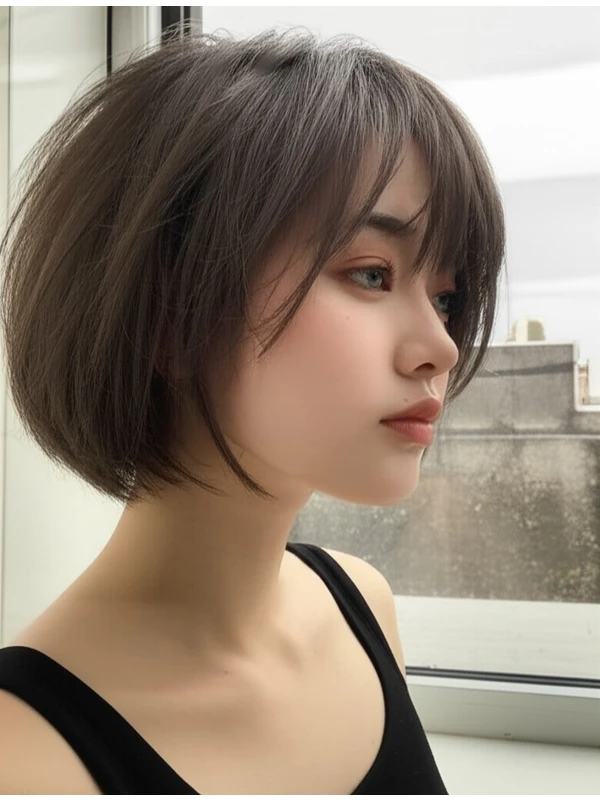#The Undercut Bob: A Bold & Modern Style Guide
The undercut bob is a seriously cool haircut that’s been gaining popularity for years – and for good reason! It combines the classic, chic bob with an edgy twist. This guide will walk you through everything you need to know about this versatile style, from whether it suits your face shape to how to maintain its stunning look.
#1) Background & Definition: What is an Undercut Bob?
The undercut bob isn’t just one thing; it's a family of styles! At its core, it’s a bob haircut (meaning the hair generally falls somewhere between chin and shoulder length) with sections of hair shaved or significantly shorter on the sides and/or back. This creates a dramatic contrast in lengths that adds visual interest and an unexpected edge to the classic bob shape.
Key Features:
- Length Contrast: The defining feature – short, often shaved or buzzed under layers contrasted with longer hair on top.
- Geometric Shape: Undercut bobs are often very structured and geometric, though softer versions exist (more on that later!).
- Volume Play: The undercut can create the illusion of more volume at the crown.
Typical Length Ranges:
- Top Layer: Chin-length to shoulder length is common, but can be shorter or longer depending on preference and face shape.
- Undercut Area: Anywhere from a very subtle taper to completely shaved (bald fade) – it’s your choice!
Alternative Names:
You might hear this style called an undercut bob, reverse bob, layered undercut, or even a textured bob with an undercut element.
#2) Face Shape Fit: Finding Your Perfect Angle
The undercut bob can be incredibly flattering on many face shapes – it’s all about adjusting the length and angles!
- Oval: Lucky you! Almost any version of the undercut bob will work beautifully, highlighting your balanced features. A side-swept fringe adds extra softness.
- Round: Length is key here. Aim for a longer bob (collarbone or slightly below) to elongate your face. Avoid blunt bangs which can accentuate roundness; opt for soft, angled layers instead. The undercut helps slim the sides.
- Square: Soften those angles! A textured undercut bob with layered pieces around the jawline will create a more feminine feel. A side part is almost always flattering.
- Heart: Chin length or slightly shorter works well to balance a wider forehead and narrower chin. Face-framing layers are your friend – they add softness. Avoid very short undercuts that can make your face appear too wide. A wispy fringe can be lovely!
- Diamond: This shape benefits from volume at the crown, which an undercut bob provides naturally. An angled fringe softens the angles of a diamond-shaped face.
- Oblong (Long): Avoid super short bobs that will accentuate length. A longer bob with layers and soft waves creates width and balance. Side bangs are essential to break up the vertical lines.
#3) Body Proportions & Height Guidance: Tailoring the Look
Your height and body shape also influence how an undercut bob looks on you!
- Petite: Shorter bobs with a more subtle undercut work best to avoid overwhelming your frame. Too much volume can make you look even smaller.
- Average Height: You have lots of flexibility! Experiment with different lengths and undercut intensities.
- Tall: A longer bob (collarbone length or longer) provides balance. A bolder, more dramatic undercut can add visual interest to a taller frame.
- Narrow Shoulders: Volume at the crown and shoulder-grazing layers create the illusion of broader shoulders.
- Broad Shoulders: Avoid overly voluminous styles that emphasize width. A sleek, streamlined undercut bob with minimal layering will be more flattering.
- Short Neck: Avoid bobs that are too long or have a lot of volume at the back – this can accentuate a shorter neck. Chin-length or slightly above is usually best.
- Long Neck: You can rock almost any length! A longer bob with layers adds visual interest and helps fill out space.
#4) Works Best With Hair Types & Densities: Finding Your Match
The undercut bob isn't limited to one hair type, but understanding how your texture behaves is key.
- Straight: Looks incredibly sleek and modern! The contrast between the short undercut and longer top layers really shines.
- Wavy: Beautifully textured! Embrace those natural waves with a slightly more relaxed undercut for a softer look.
- Curly/Coily: Can be stunning, but requires careful consideration of shrinkage. A shorter bob is often better to avoid excessive bulk and maintain shape. Shrinkage Tip: Curls can shrink up to 50% when dry! Account for this when choosing the length. A stylist experienced with your curl pattern is crucial.
- Fine: The undercut creates an illusion of density, making fine hair look fuller. Layering is important to avoid a flat appearance.
- Medium: Versatile – most variations will work well.
- Thick: Requires strategic layering and shaping to remove weight and prevent the bob from looking too bulky. A more dramatic undercut can help thin out thick layers.
#5) Styling Variations: From Sleek to Textured
The beauty of this cut is its adaptability!
- Sleek vs. Textured: A sleek style uses a smoothing serum and flat iron for a polished look. Texture comes from air-drying, using texturizing sprays, or scrunching with mousse.
- Middle vs Side Part: A middle part creates symmetry; a side part adds softness and volume.
- Fringe Variations: Blunt bangs are bold, angled bangs soften features, wispy bangs add lightness.
- Occasion Styling: A sleek bob is perfect for the office or evening events. Beachy waves work wonders for casual outings.
#6) Maintenance: Keeping Your Bob Looking Sharp
- Trim Cadence: Every 6-8 weeks to maintain shape and prevent split ends. More frequent trims (every 4-6 weeks) may be needed with a more dramatic undercut.
- At-Home Routine: Gentle shampoo & conditioner, leave-in conditioner for moisture (especially important for curly/coily hair).
- Heat vs Air Dry: Heat styling provides sleekness and control; air drying enhances natural texture. Alternate to minimize heat damage.
- Product Checklist:
- Shampoo & Conditioner: Suitable for your hair type.
- Leave-in Conditioner: For hydration and detangling.
- Styling Cream/Mousse: For hold, texture, or smoothing (depending on desired look).
- Finishing Serum/Oil: To add shine and tame frizz.
- Daily Styling Time: 15-45 minutes, depending on the style and hair type.
#7) Grow-Out Roadmap: The Evolution of Your Style
- Months 1-3: The undercut is most noticeable; shape needs regular maintenance.
- Months 3-6: The undercut begins to blend in more with the longer layers. Consider adding face-framing layers or a fringe for a fresh look.
- Maintaining Shape: Talk to your stylist about how to transition the style gradually without losing its edge.
#8) Color Pairings: Enhancing Your Undercut Bob
- Cool Undertones (ash blonde, cool brown): Icy tones enhance the modern feel of the undercut bob.
- Warm Undertones (golden blonde, caramel brown): Creates a softer, more dimensional look.
- Low-Commitment Options: Balayage or highlights add dimension without a drastic color change. A root smudge can soften harsh lines.
#9) Season & Occasion Guide: Styling for Every Moment
- Spring/Summer: Embrace lighter textures and brighter colors. Beachy waves are perfect!
- Fall/Winter: Add warmth with richer tones and sleek, polished styles.
- Work: Sleek and professional – minimal texture.
- Weddings: Romantic waves or a sophisticated updo showcasing the undercut.
- Parties: Experiment with bold colors, textures, and accessories!
#10) Cost & Time: What to Expect at the Salon
- Salon Time: 1.5 - 3 hours (can be longer for complex undercuts or color).
- Estimated Price Range: Moderately priced – expect a slightly higher cost than a simple bob due to the extra detailing involved.
#11) Pros & Cons: Weighing Your Options
Pros:
- Edgy and stylish
- Versatile (can be adapted for different looks)
- Adds volume at the crown
- Can flatter many face shapes
Cons:
- Requires regular trims to maintain shape
- Styling can take time, depending on desired look
- The undercut is very noticeable and requires commitment
#12) Salon Consultation Script: Your Checklist for Success
When talking to your stylist, be prepared with these points:
- "I'm interested in an undercut bob. Can you show me some examples?"
- “What length would you recommend based on my face shape?”
- "How dramatic should the undercut be? (Subtle taper vs. shaved)"
- "Can we incorporate layers to soften/add volume?"
- "What styling products will I need, and how do I achieve [desired look] at home?”
- “I'm concerned about shrinkage – can you factor that into the length if my hair is curly or coily?”
#FAQs: Your Burning Questions Answered
- Can an undercut bob work with fine hair? Yes! Layering and strategic styling are key to creating volume.
- Is it difficult to style? It depends on your desired look and natural texture – some styles require more effort than others.
- What if I want to grow out the undercut? The transition requires patience and regular trims, but it's definitely possible! Talk to your stylist about a gradual approach.
- Can I do this myself at home? Shaving an undercut is best left to professionals – safety first! Styling the top layers is more manageable for DIYers.
- What if my hair doesn’t hold curl well? Use a texturizing product and try different curling techniques to achieve your desired style.
- How can I make an undercut bob look more feminine? Soft layering, face-framing pieces, and romantic styling (like waves) will soften the edgy vibe.
